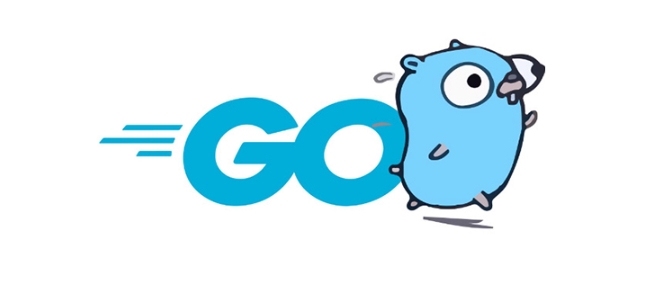Yes, Go has a garbage collector (GC). Go's garbage collector uses a concurrent three-color mark clearing algorithm to automatically manage memory when the program is running, and efficient memory recycling is achieved by marking still in use memory and cleaning up unused parts. It supports low-latency design and is suitable for scenarios such as high-performance network servers. Its core workflow includes: 1. Marking stage: marking all reachable objects starting from the root node; 2. Clearing stage: Release unmarked memory blocks for subsequent reuse. The main advantages of Go using GC include: improving development efficiency, reducing memory leaks and hanging pointers risks, and simplifying concurrent programming. But high frequency memory allocation may cause performance-sensitive problems. Developers can adjust the GC trigger threshold through GOGC parameters, use the pprof tool to monitor the GC status, or manually trigger the GC through runtime.GC(). Overall, Go's GC takes into account both performance and ease of use in most cases.

Yes, Go does have a garbage collector (GC). In fact, automatic memory management via garbage collection is a core feature of the Go programming language. Unlike languages ??like C or C , where developers manually allocate and free memory, Go handles this process automatically to reduce memory leaks and improve developer productivity.

How Go's Garbage Collector Works
Go uses a concurrent, tri-color mark-and-sweep garbage collector. This means it identifies which memory is still in use (mark phase) and then cleans up unused memory (sweep phase), all while allowing your program to keep running with minimal pauses.
The GC runs concurrently with the program, meaning it doesn't stop the entire program for long periods when collecting garbage. It's optimized for low latency, making it well-suited for applications like network servers that require high performance and responsiveness.

Here's how it works at a high level:
- Mark phase : The GC finds and marks all reachable objects starting from root nodes (like global variables and stack frames).
- Sweep phase : Unmarked memory blocks are marked as free and can be reused.
This approach keeps memory usage efficient without requiring manual intervention.

Why Go Uses Garbage Collection
Garbage collection in Go helps simplify development by removing the need for manual memory management. That makes it easier to avoid common bugs like dangling points or memory leaks. It also aligns with Go's design philosophy: simple, productive, and efficient for building reliable systems software.
Some key benefits include:
- Faster development cycles
- Reduced risk of memory-related bugs
- Easier concurrency handling thanks to built-in safety
However, it's not without trade-offs. While the GC is fast and efficient, there are times—especially under heavy memory allocation—when GC pauses can affect performance-sensitive applications. But for most use cases, Go's GC strikes a good balance between performance and ease of use.
Tuning and Monitoring Garbage Collection
If you're working on performance-critical applications, you may want to tune or monitor the GC behavior. Go provides tools and environment variables to help with this:
- Use
GOGCto control the target percentage of heap growth before triggering GC. The default is 100%, meaning GC runs when the heap doubles in size. - You can disable GC entirely by setting
GOGC=off, though this is generally only useful for short-lived programs or benchmarking. - Tools like
pprofand the runtime/debug package let you inspect GC stats and trace GC events.
For example, calling runtime.GC() forces an immediate garbage collection cycle, but this is rarely needed in practice unless you're optimizing specific parts of your code.
Conclusion
So yes, Go absolutely has a garbage collector—and it's designed to be efficient, low-latency, and mostly invisible during everyday use. It plays a big role in helping Go deliver both performance and developer-friendly features. Unless you're doing something very specialized, you probably won't need to tweak it, but it's good to know how it works under the hood.
Basically that's it.
The above is the detailed content of Does Go have a garbage collector?. For more information, please follow other related articles on the PHP Chinese website!

Hot AI Tools

Undress AI Tool
Undress images for free

Undresser.AI Undress
AI-powered app for creating realistic nude photos

AI Clothes Remover
Online AI tool for removing clothes from photos.

Clothoff.io
AI clothes remover

Video Face Swap
Swap faces in any video effortlessly with our completely free AI face swap tool!

Hot Article

Hot Tools

Notepad++7.3.1
Easy-to-use and free code editor

SublimeText3 Chinese version
Chinese version, very easy to use

Zend Studio 13.0.1
Powerful PHP integrated development environment

Dreamweaver CS6
Visual web development tools

SublimeText3 Mac version
God-level code editing software (SublimeText3)

Hot Topics
 How can you handle JSON encoding and decoding effectively in Go?
Jun 11, 2025 am 12:02 AM
How can you handle JSON encoding and decoding effectively in Go?
Jun 11, 2025 am 12:02 AM
Effective handling of JSON in Go requires attention to structural labels, optional fields and dynamic analysis. Use the struct tag to customize the JSON key name, such as json:"name"; make sure the fields are exported for access by the json package. Use pointers or omitempty tags when processing optional fields to distinguish between unprovided values ??from explicit zeros. When parsing unknown JSON, map[string]interface{} can be used to extract data with type assertions. The default number will be parsed as float64. json.MarshalIndent can be used to beautify the output during debugging, but the production environment should avoid unnecessary formatting. Mastering these techniques can improve the robustness and ability of your code
 How can Go programs interact with C code using Cgo? What are the trade-offs?
Jun 10, 2025 am 12:14 AM
How can Go programs interact with C code using Cgo? What are the trade-offs?
Jun 10, 2025 am 12:14 AM
Go programs can indeed interact with C code through Cgo, which allows Go to call C functions directly. When using Cgo, just import the pseudo-package "C" and embed C code in the comments above the import line, such as including C function definitions and calling them. In addition, external C library can be linked by specifying link flags such as #cgoLDFLAGS. However, there are many issues to pay attention to when using Cgo: 1. Memory management needs to be processed manually and cannot rely on Go garbage collection; 2. Go types may not match C types, and types such as C.int should be used to ensure consistency; 3. Multiple goroutine calls to non-thread-safe C libraries may cause concurrency problems; 4. There is performance overhead for calling C code, and the number of calls across language boundaries should be reduced. Cgo's lack
 How can Go applications be cross-compiled for different operating systems and architectures?
Jun 11, 2025 am 12:12 AM
How can Go applications be cross-compiled for different operating systems and architectures?
Jun 11, 2025 am 12:12 AM
Yes,Goapplicationscanbecross-compiledfordifferentoperatingsystemsandarchitectures.Todothis,firstsettheGOOSandGOARCHenvironmentvariablestospecifythetargetOSandarchitecture,suchasGOOS=linuxGOARCH=amd64foraLinuxbinaryorGOOS=windowsGOARCH=arm64foraWindow
 How does Go handle pointers, and how do they differ from pointers in C/C ?
Jun 10, 2025 am 12:13 AM
How does Go handle pointers, and how do they differ from pointers in C/C ?
Jun 10, 2025 am 12:13 AM
Go simplifies the use of pointers and improves security. 1. It does not support pointer arithmetic to prevent memory errors; 2. Automatic garbage collection and management of memory without manual allocation or release; 3. The structure method can seamlessly use values ??or pointers, and the syntax is more concise; 4. Default safe pointers to reduce the risk of hanging pointers and memory leakage. These designs make Go easier to use and safer than C/C, but sacrifice some of the underlying control capabilities.
 What are the implications of Go's static linking by default?
Jun 19, 2025 am 01:08 AM
What are the implications of Go's static linking by default?
Jun 19, 2025 am 01:08 AM
Go compiles the program into a standalone binary by default, the main reason is static linking. 1. Simpler deployment: no additional installation of dependency libraries, can be run directly across Linux distributions; 2. Larger binary size: Including all dependencies causes file size to increase, but can be optimized through building flags or compression tools; 3. Higher predictability and security: avoid risks brought about by changes in external library versions and enhance stability; 4. Limited operation flexibility: cannot hot update of shared libraries, and recompile and deployment are required to fix dependency vulnerabilities. These features make Go suitable for CLI tools, microservices and other scenarios, but trade-offs are needed in environments where storage is restricted or relies on centralized management.
 How does Go ensure memory safety without manual memory management like in C?
Jun 19, 2025 am 01:11 AM
How does Go ensure memory safety without manual memory management like in C?
Jun 19, 2025 am 01:11 AM
Goensuresmemorysafetywithoutmanualmanagementthroughautomaticgarbagecollection,nopointerarithmetic,safeconcurrency,andruntimechecks.First,Go’sgarbagecollectorautomaticallyreclaimsunusedmemory,preventingleaksanddanglingpointers.Second,itdisallowspointe
 How do I create a buffered channel in Go? (e.g., make(chan int, 10))
Jun 20, 2025 am 01:07 AM
How do I create a buffered channel in Go? (e.g., make(chan int, 10))
Jun 20, 2025 am 01:07 AM
To create a buffer channel in Go, just specify the capacity parameters in the make function. The buffer channel allows the sending operation to temporarily store data when there is no receiver, as long as the specified capacity is not exceeded. For example, ch:=make(chanint,10) creates a buffer channel that can store up to 10 integer values; unlike unbuffered channels, data will not be blocked immediately when sending, but the data will be temporarily stored in the buffer until it is taken away by the receiver; when using it, please note: 1. The capacity setting should be reasonable to avoid memory waste or frequent blocking; 2. The buffer needs to prevent memory problems from being accumulated indefinitely in the buffer; 3. The signal can be passed by the chanstruct{} type to save resources; common scenarios include controlling the number of concurrency, producer-consumer models and differentiation
 How can you use Go for system programming tasks?
Jun 19, 2025 am 01:10 AM
How can you use Go for system programming tasks?
Jun 19, 2025 am 01:10 AM
Go is ideal for system programming because it combines the performance of compiled languages ??such as C with the ease of use and security of modern languages. 1. In terms of file and directory operations, Go's os package supports creation, deletion, renaming and checking whether files and directories exist. Use os.ReadFile to read the entire file in one line of code, which is suitable for writing backup scripts or log processing tools; 2. In terms of process management, the exec.Command function of the os/exec package can execute external commands, capture output, set environment variables, redirect input and output flows, and control process life cycles, which are suitable for automation tools and deployment scripts; 3. In terms of network and concurrency, the net package supports TCP/UDP programming, DNS query and original sets.






